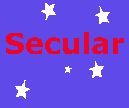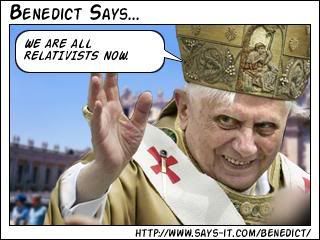The Myth of church-state separation in Australia
“The Myth of church-state separation.” Google that phrase, and you invariably come up with historical revisionist articles claiming that America’s Founding Fathers were strict Biblical literalists who intended the US to be a Christian Nation ™. That’s because, however devoutly the American Christian Taliban wish it to be otherwise, the First Amendment has repeatedly been interpreted to have established a “wall of separation” between church and state. Probably the most significant legal ruling to be based on such an interpretation was Kitzmiller v. Dover.
In Australia, many of us take it for granted that a similar wall of separation exists in our democracy. Well, perhaps we shouldn’t.
In a 2005 issue of Australian Humanist, Max Wallace points out that there are only two places in the Australian Constitution in which religion is mentioned—in the Preamble and in section 116:
The Commonwealth shall not make any law for establishing any religion, or for imposing any religious observance, or for prohibiting the free exercise of any religion, and no religious test shall be required as a qualification for any office or public trust under the Commonwealth.As Wallace’s article demonstrates, High Court judges and constitutional law experts alike have been unanimous in insisting that a notion of church-state separation cannot be inferred from the wording of section 116, much less from anywhere else in the Constitution. This interpretation was crucial in the 1981 Defence of Government Schools case, in which the Federal Government’s funding of church schools was challenged.
Justice Sir Ninian Stephen said s.116:It is, in other words, the elephant in the room of Australian democracy. It places us, Wallace suggests,
... cannot readily be viewed as a repository of some broad statement of principle concerning the separation of church and state, from which may be distilled the detailed consequences of such separation.
That is pretty unequivocal. The day after the case, none of the newspapers reporting the case published what the judges had said. Also, in many histories of Australia, these words, and the subject of church and state, do not appear. Textbooks on politics in Australia do not discuss it. We have an Australian Republican Movement that is arguing for a republic with no mention of church and state on their website. This is despite the fact that separation of church and state is the foundation stone of two of the leading republics in the world: the American and the French.
somewhere between democracy and theocracy. I suggest that is an unacceptable state of affairs for a modern liberal democracy. We can hardly criticise regimes that refuse the distinction when we have not formalised it ourselves.Indeed. On this National Day of Secularism, it is truly sobering to consider that the separation of church and state in Australia is even more tenuous than it is in the maniacally-religious US. You can just imagine what might transpire if the Religious Right (whether it’s the Opus Dei Liberals or the Pentecostal megachurch Liberals leading the parade) ever attains the same level of influence here that it has attained over there.
Other resources on this topic:
"Separation of church and state?" (Michael Hogan, University of Sydney)
"Church and state in Australia" (also by Max Wallace)
"Church and state" (Anglican bishop Tom Frame, who has also written a book on the subject)
UPDATE: May 26th also marks the tenth annual National Sorry Day, and it has been remiss of us not to have mentioned it earlier.
So the Australian Prayer Network just happened to select this date for their National Day of Thanksgiving? How interesting. I wonder who they think the members of the Stolen Generations should be thanking. See Simmo's post.


















|